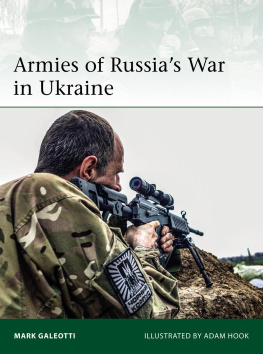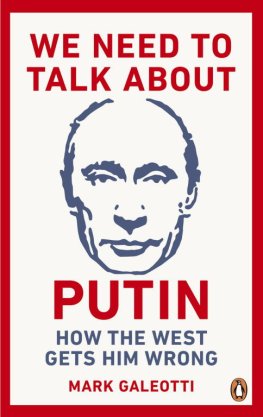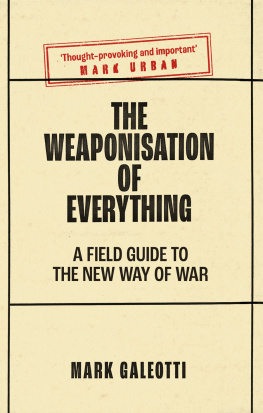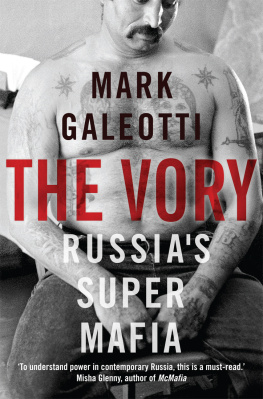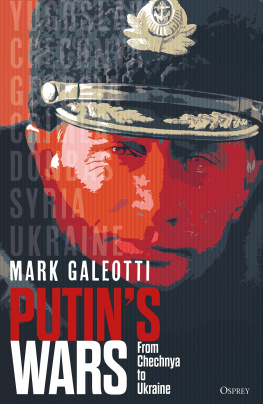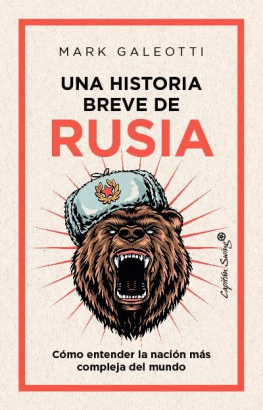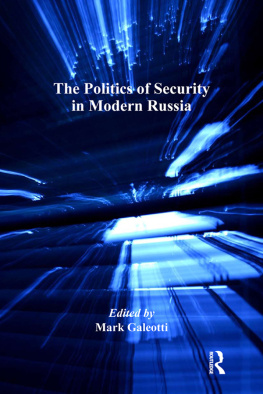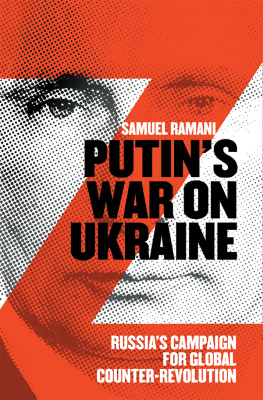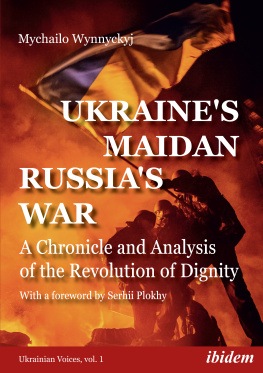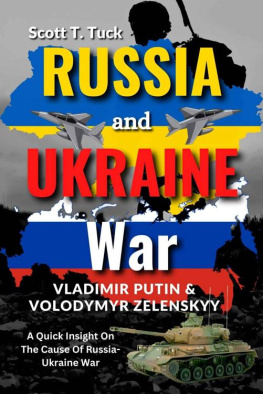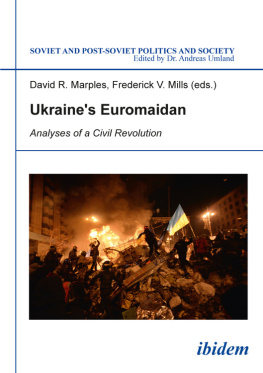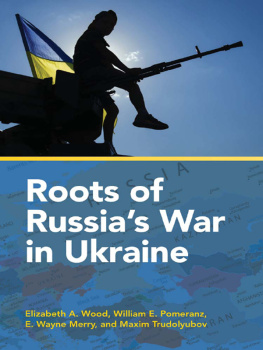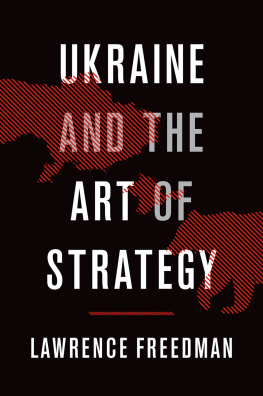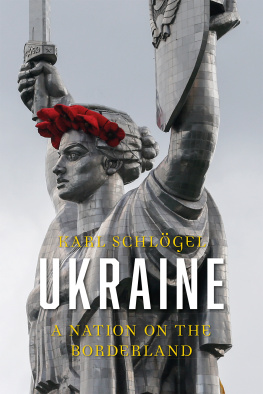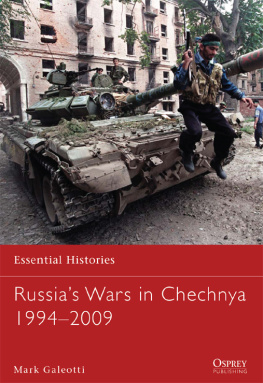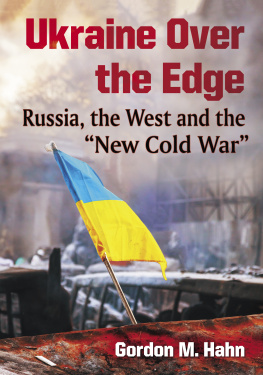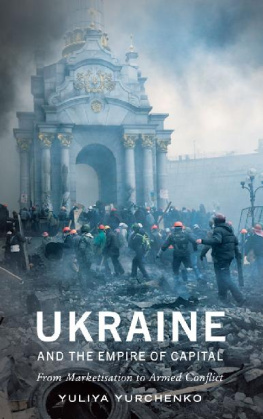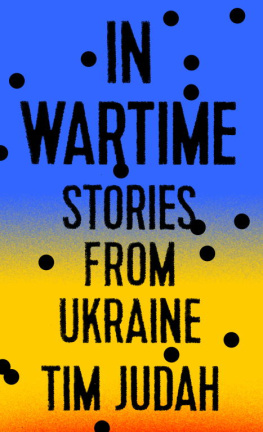CONTENTS
ARMIES OF RUSSIAS WAR IN UKRAINE
INTRODUCTION
When Russian forces, fully armed yet stripped of their insignia, fanned out across the Crimean Peninsula in March 2014, they were not just seizing territory that Moscow considered historically its own: they were also opening a new chapter in a complex relationship rooted in kinship and difference, shared history and divergent politics.
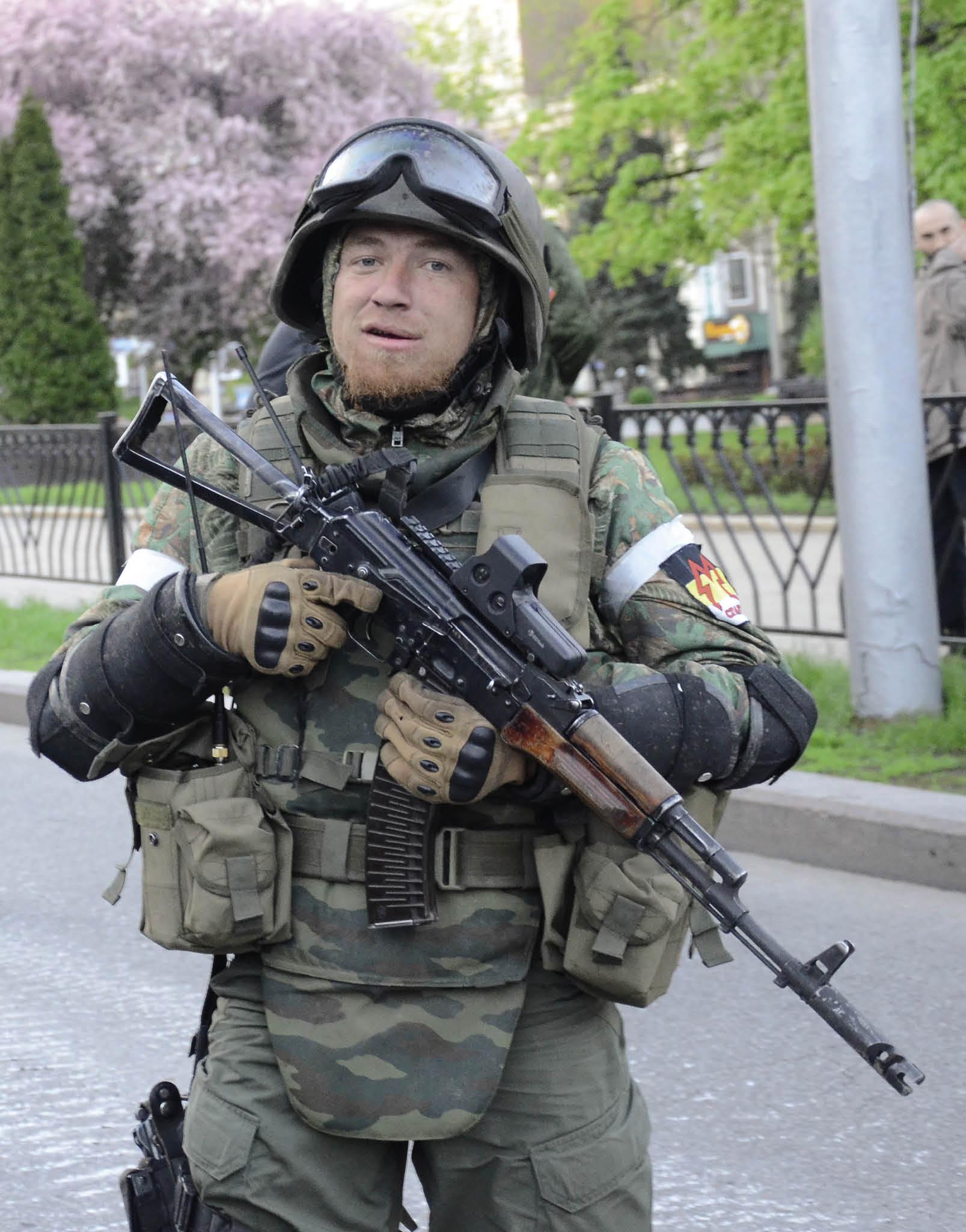
Photographed at a Victory Day parade in Donbas in 2015, this is Arsen Motorola Pavlov, commander of the DNRs Sparta Battalion until his assassination the following year. Note his modern uniform and equipment, the white brassards round both arms, the distinctive unit patch on his left sleeve, his non-standard gloves, and the collimator sight on his AK-74. (Andrew Butko/Wikimedia Commons/CC-BY-SA 3.0)
The very name Ukraine springs from the word for border, yet it can rightly call itself the heart and wellspring of the Rus people. Its capital, Kiev, was politically and culturally dominant amongst their city-states before it was sacked by the invading Mongols in 1240. During the years of Mongol domination, the small town of Moscow and the ruthlessly opportunistic Rurikid dynasty that controlled it rose to assume Kievs place. Ukraine would be contested between Orthodox Muscovy and the Catholic Poles and Lithuanians until falling under the rule of Russia in 1654. Ukraine, part Orthodox and part Catholic, would essentially remain part of the Russian Empire for the next three and a half centuries, despite periodic risings and atrocities, such as the Holodomor, the enforced mass starvation whereby Soviet dictator Joseph Stalin broke Ukrainian resistance to his rule in the 1930s. During World War II Ukrainians fought both for and against the USSR and the German occupiers, and the last anti-Soviet guerrillas were not crushed until the mid-1950s.
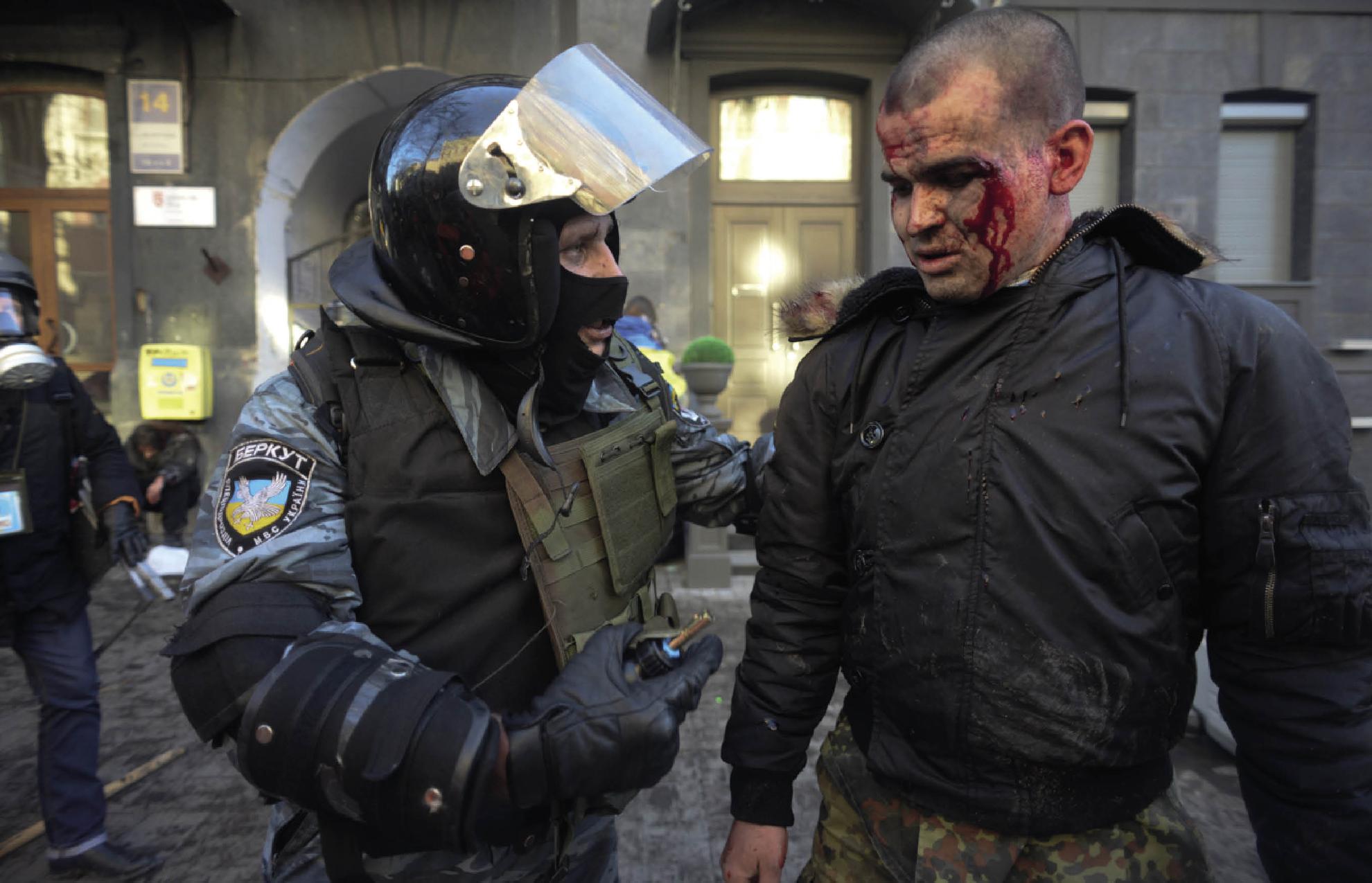
A Berkut riot policeman (left) with a bloodied protester during the February 2014 demonstrations in Kyiv. Note his riot armor, the eagle patch on his sleeve, and the distinctive blue-and-gray tiger-stripe camouflage uniform see . (Mstyslav Chernov/Wikimedia Commons/CC-BY-SA 3.0)
Nationalism was rekindled in Ukraine in the 1980s, as the Soviet Union ground towards its end. On August 24, 1991 the country formally declared itself independent, although achieving this in practice would take months of disengagement. Nonetheless, a referendum ratified this decision, with more than 90 percent of voters backing independence. The Soviet Union itself was formally dissolved at the end of 1991.
In common with many other post-Soviet states suddenly thrust into statehood, Ukraine suffered from serious economic, social and political challenges. Inflation skyrocketed and the economy shrank. Despite several dramatic expressions of popular dissatisfaction with corrupt governments and their empty promises notably the 200405 Orange Revolution following rigged elections Ukraine remained torn between its hopes of building a liberal, economically vibrant, European democracy, and a reality characterized by systemic corruption, inefficiency and economic decay.
In 2013, President Viktor Yanukovych made a momentous political mistake when he flip-flopped on a proposed treaty with the European Union. Like so many of the so-called Donetsk mafia politicians from the east of the country, Yanukovych looked to Putins ascendant Russia for patronage and profit. Moscow was determined that Ukraine would remain within its sphere of influence, but national sentiment, particularly in the west of the country, wanted closer ties to the European Union. Having initially backed an Association Agreement with the EU in 2013, Yanukovych then reversed his policy once Moscow made its hostility clear.
Protests began in Kyivs main Independence Square, and initial attempts to disperse them only galvanized the opposition and brought more to join the rising. The government tried several times to use force to end the so-called Euromaidan demonstrations, but with a mix of brutality and inconsistency that only worsened the situation. On February 22, 2014, facing the threat of impeachment and with his government collapsing around him, Yanukovych fled to Russia, leaving behind 130 dead and a country rethinking its place in the world. Moscow, alarmed at the prospect of a new Ukrainian government committed to breaking free of its influence, began making its own plans.
TAKING CRIMEA
The situation was especially complex in Crimea, the peninsula on the countrys southern coast, which was also still home to Russias Black Sea Fleet. It had been part of the Russian Socialist Federal Soviet Republic until 1954, when Soviet leader Nikita Khrushchev (himself a Ukrainian) transferred it to Ukraine. Nonetheless, much of its population was culturally Russian. In 1990 almost all Ukrainians voted for independence from the USSR, but this prospect received a much more lukewarm 56 percent endorsement in Crimea, and since then Crimeans had often felt neglected by Kyiv.
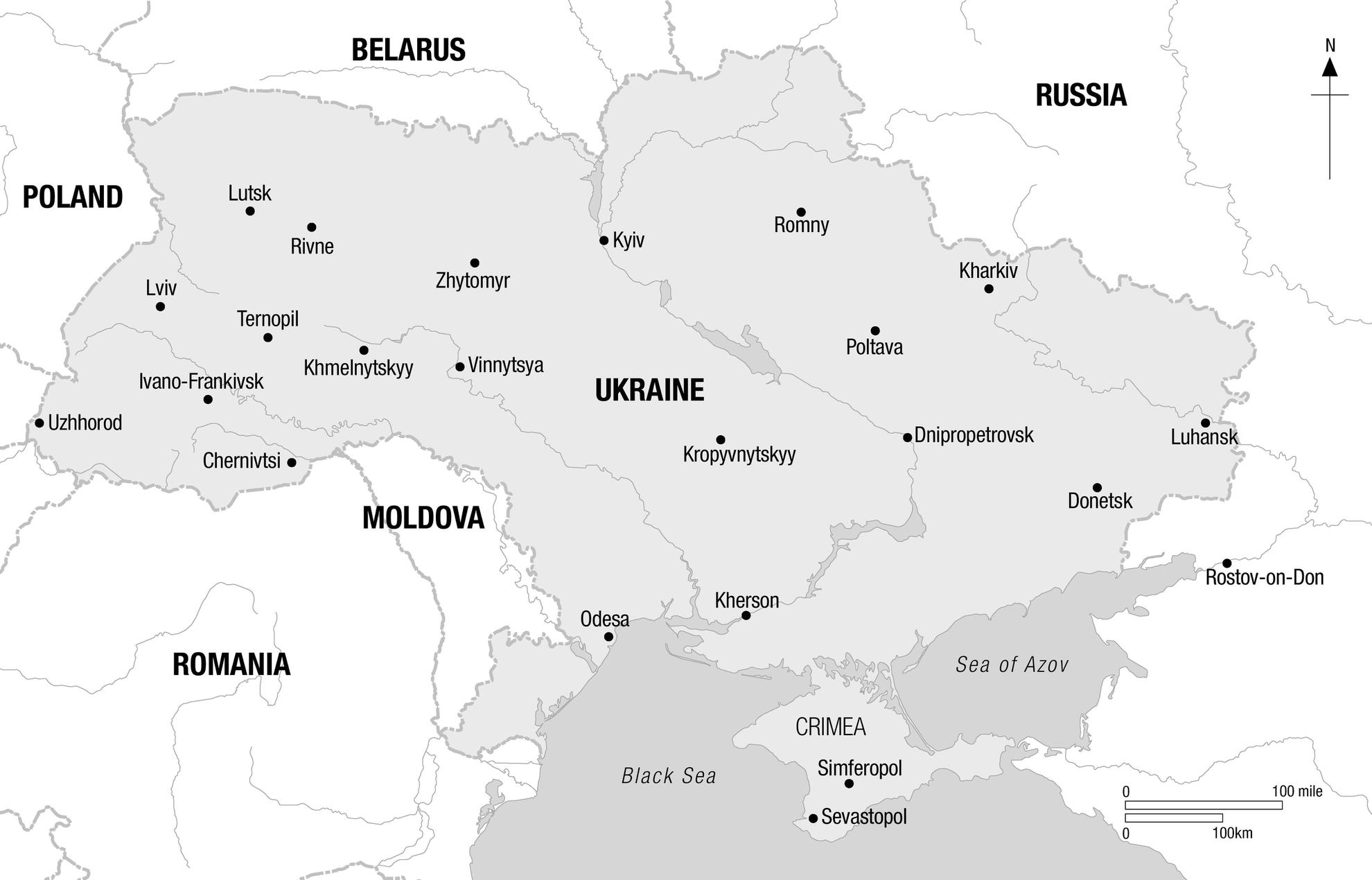
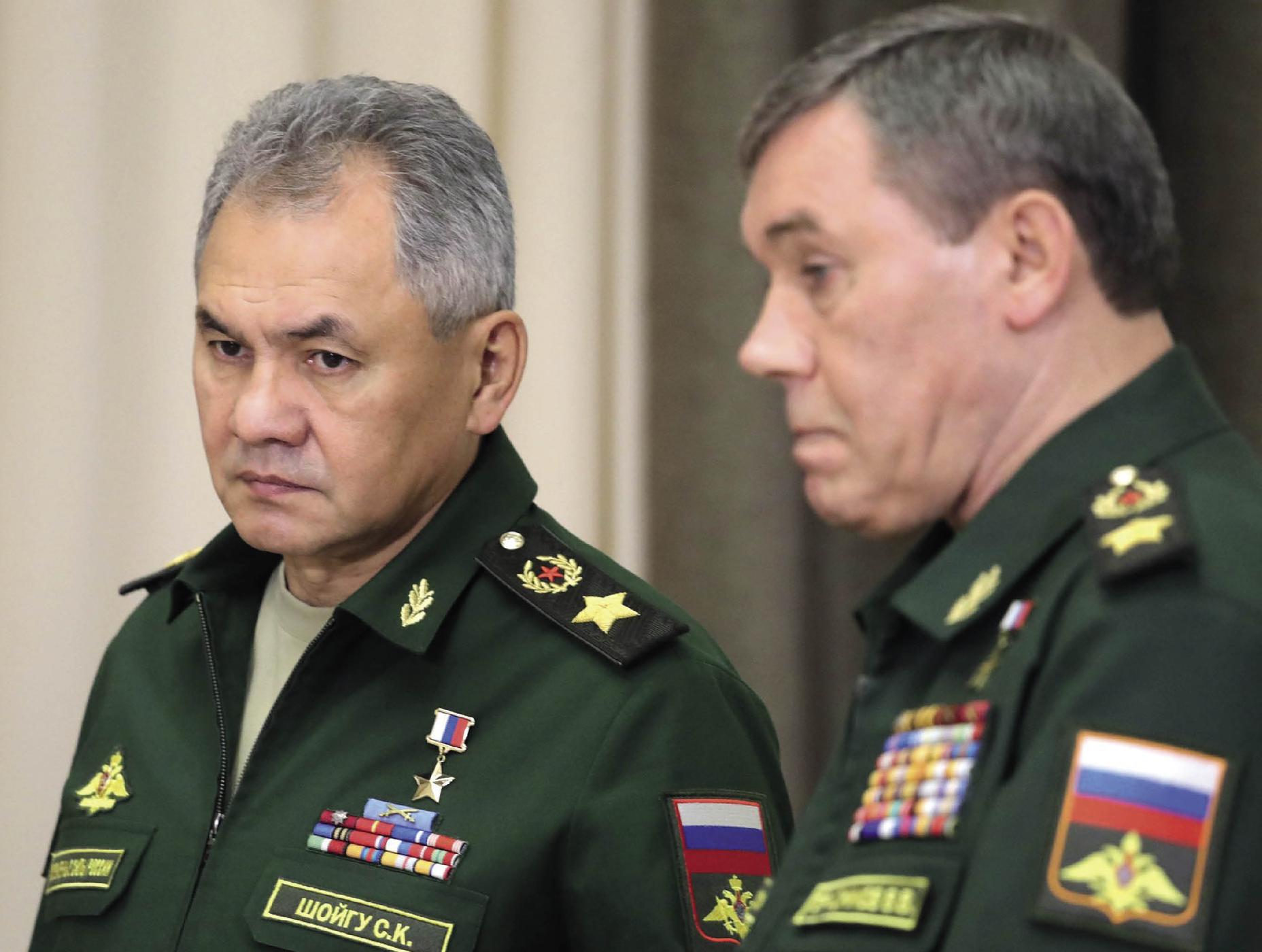
Russian Defense Minister Sergei Shoigu (left) confers with his Chief of the General Staff, Gen Valery Gerasimov; these were the military architects of President Putins seizure of Crimea and the subsequent operation in the Donbas. (Kremlin.ru/CC-BY-SA 4.0)
The Kremlin was alarmed that the collapse of the Yanukovych regime and the emergence of a new government avowedly committed to closer relations with the West maybe even joining NATO put its strategic positions in Crimea at risk. Its 1997 agreement with Kyiv on basing the Black Sea Fleet and up to 25,000 military personnel on the peninsula ran through to 2042, but even so there were many in Moscow who were unwilling to put their faith in what they saw as an illegitimate and nationalistic new regime. Besides this, President Vladimir Putin of Russia, who had enjoyed sky-high approval ratings for so much of his time in office, was now watching these figures fall. He knew full well that most Russians believed that Crimea was really part of their own country, unfairly handed to Ukraine. With Putin also apparently coming more and more to believe his own mythology and looking to establish his place in history as the man who made Russia great again, political, military and strategic interests all seemed to converge.
The decision-making about Crimea took place behind the scenes and largely involved only a handful of Putins closest (and typically most hawkish) confidants. On February 20, 2014, two days before Yanukovych fled the country, the decision appears to have been made to take the peninsula. Vremya cha zero hour was set for February 27, 2014.
More than a tenth of Ukraines military strength, some 22,000 military personnel, were based in Crimea. Most, however, were naval personnel, and none were kept at a particularly high state of readiness. Beyond naval and coastal defense missile forces, as well as an Air Force brigade and three antiaircraft missile regiments, there were only a single regular Army battalion and several Naval Infantry (marine) units. While the latter were relatively well trained, they were all suffering from the disruption and demoralization caused by years of under-funding. Beyond that, there were three brigades and two battalions of paramilitary Interior Troops, subordinated to the Ministry of Internal Security (MVS), and a Border Guard battalion which, while primarily intended for police and security missions, had a secondary national defense role. The crucial issue, however, once the Russians made their move, would be the lack of clear orders and, according to some, willful confusion in the chain of command by officers hostile to the new regime.

